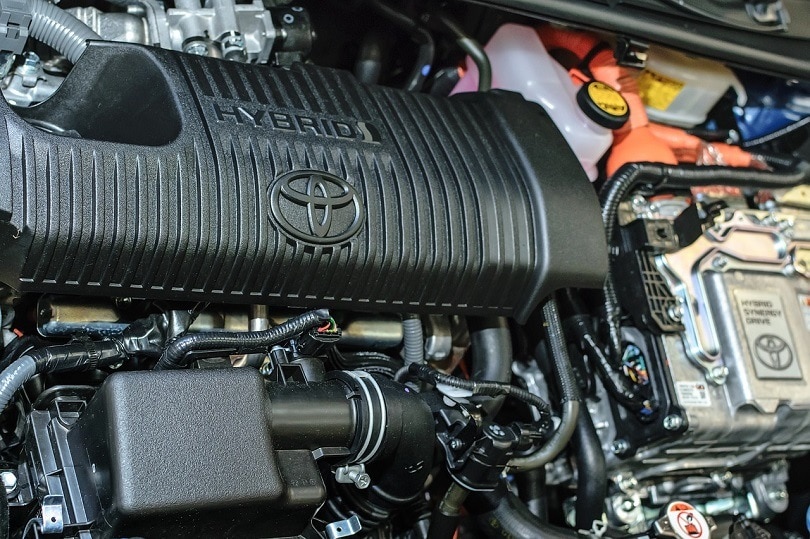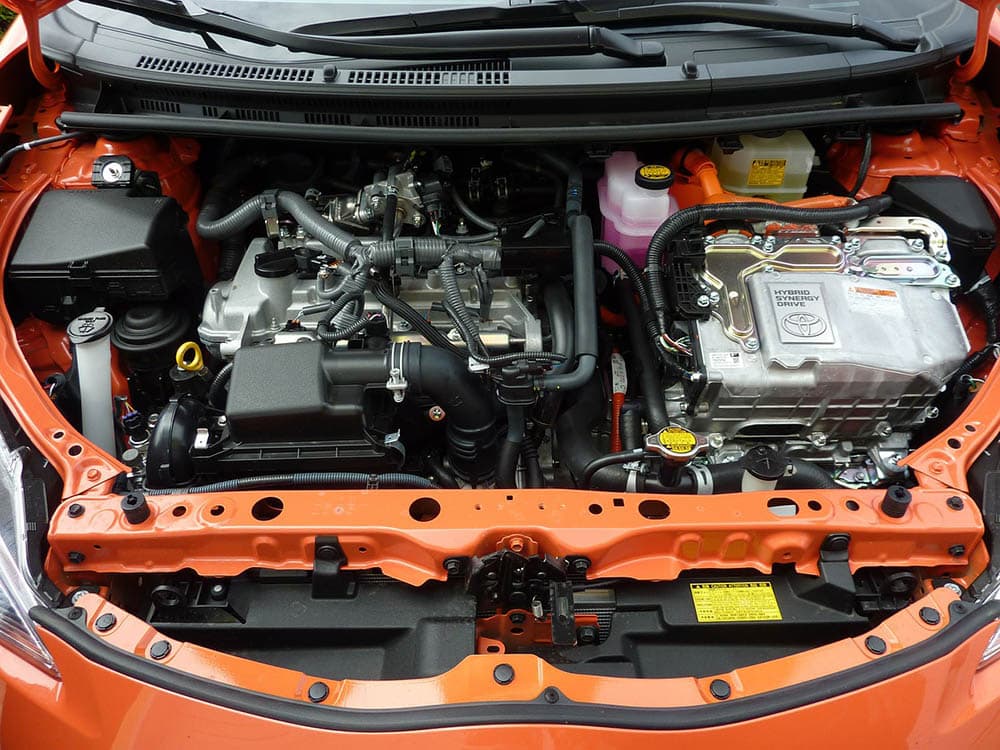What Does CC Mean in Engines? Facts & FAQ
-
Pete Ortiz
- Last updated:

You have probably heard of the term “CC” in reference to vehicle specifications. Most people often mention it while measuring a car’s performance or power. In technical terms, “CC” stands for cubic centimeters, a metric unit used to measure the volume or engine capacity. Also known as engine displacement, it is the first data that car manufacturers cite with the engine properties.
So, what is the engine capacity of the different models of vehicles driving on the road? How does CC affect mileage and performance? Which type of engine is best for you? Read on to find out everything you need to know about your car’s engine capacity.
 What CC Means in Car Engines
What CC Means in Car Engines
In cars, the engine size or CC is the volume of air and fuel that can be injected through the engine cylinders and is measured in cubic centimeters. The CC figure usually provided by manufacturers is usually the combined capacity of all engine cylinders in a car as it completes one cycle.
For instance, if a car has four combustion cylinders and a volume of 1.0 liter, then all four cylinders can accommodate 1.0 liter of air and fuel mixture inside them. If a car engine is only equipped with one cylinder, that one cylinder will be able to accommodate all of the air inside it during combustion. The size of a car engine is specified in liters, then rounded up to the nearest tenth of a liter. For instance, a car that features 1790 CC would be described as a 1.8-liter car.
- Under 1.0 liter
- 0 liters to 2.0 liter
- 0 liters to 3.0 liter
- over 3.0-liter engines
In engines with a volume of under 1.0 liters, you can expect to find three or four combustion cylinders, many of which use turbochargers for that extra torque.
In traditional car models, a higher engine volume produced more power than smaller engine vehicles. But modern cars are equipped with turbocharger engines that produce more power output than back in the day. To establish the power produced by a specific car engine, you need only look at the horsepower values, usually given in “hp.” Though most people use the term CC and horsepower to mean the same thing, they measure two different aspects of the engine. While CC measures engine capacity, horsepower measures the general power output of a car’s engine.

How CC Affects Car Performance
An engine CC is a vital determiner of your vehicle’s outputs, such as the torque, mileage, and engine power. To understand how the engine capacity works, consider a container full of water. The bigger the container, the more water it can accumulate and guzzle. The same concept applies to car engines. The bigger the space in the cylinder to accommodate the combustion of air and fuel, the more power is produced.
Therefore, an engine with a bigger capacity will pull more air into the cylinder. As the volume grows, so does the quantity of fuel sprayed into the cylinder. In a nutshell, the power output of an engine is usually directly proportional to its capacity. However, this only applies to conventional engine design car models.
- Small Engine Cars: Smaller engine cars with an engine capacity of 1.0–2.0 liters are the most economical vehicles on the road. They burn less fuel to produce power, yet this often results in the production of less power compared to larger engine models. Small engine cars are also more efficient if used for their intended purpose, usually driving on city roads. If you need to accelerate to top speeds, you may need to increase fuel consumption.
- Large Engine Cars: Large car engines ranging from 2.0 liters and above will be more powerful than smaller engine cars and will likely burn more fuel. These vehicles have faster acceleration and can reach top speeds. Unfortunately, more fuel must be injected into the cylinders to increase the power produced during combustion. This makes large-engine cars less eco-friendly.
- Turbo Charger Engines: Sometimes, the engine volume doesn’t necessarily indicate the amount of power produced. Engines equipped with turbochargers can quickly reach top speeds with increased power output and fuel efficiency without having a higher engine CC. Turbo-charged engines will often match the performance of other engine types. For instance, a Subaru 1liter Ecoboost turbocharged engine can produce as much power as a 1.9-liter, 3-cylinder engine.
How CC Affects Mileage
As you may have gathered, injecting more fuel into the engine cylinder increases fuel consumption and performance. Unfortunately, this eventually reduces the car’s mileage. So, in this context, mileage is inversely proportional to the engine capacity. This, of course, also applies to conventional engine designs. Fortunately, manufacturers have realized this relationship and are producing petrol engines that can balance mileage and power to give better performance and fuel efficiency.
Normally, cars with petrol engines that offer the best fuel mileage range to a zone of up to 1,000cc. Engines with capacities of 1,000cc to 1,500cc offer better mileage, while engines with 1,500cc to 1,800cc offer a moderate fuel mileage range. Car engines with capacities ranging from 1,800CC to 2,500CC have lower mileage figures, and vehicles with an engine displacement above 2,500cc have the least mileage on the road.

Which Car Engine Size Is Best for Me?
- Big Budget: When it comes to purchasing a vehicle, you should take the time to consider your needs and preferences. If your budget is flexible enough to buy a car with higher insurance and fuel costs, then consider going for a vehicle with Higher CC because they are less of a burden to own. This also applies to car enthusiasts who prefer having a more exhilarating driving experience from non-conventional cars as they navigate their daily commute. However, it is important to note that larger-engine cars are usually deemed high-risk vehicles by insurance companies. You may get stuck with a higher insurance premium after purchasing the vehicle. But at least you will get to experience improved performance and power from a car that can pack a punch. A car like Ford Focus ST or Audi A5 will rev up your engine.
- Small Budget: If your priority is to save more money by reducing fuel costs, making lower purchase payments for the car, and purchasing cheaper insurance premiums, consider going for lightweight cars with a lower CC. Newer city car models, such as the Peugeot 107, have less top speed and acceleration and minimize interior space. Yet, city cars are significantly more affordable and run better than higher CC cars.
- Eco-Friendly Driver: If you are an environmentally conscious driver, you should explore the possibility of buying cars equipped with hybrid engines. These car models combine the range and power of conventional engines with the eco-conscious benefits of an electric motor. Hybrid cars can significantly reduce exhaust emissions as well as fuel consumption in several ways. These include the ability to drive at low speeds and driving on electric power during takeoff. These cars utilize kinetic movement to return power to the car battery while the engine is using petrol or recharging the car when you prompt it back to the electric engine usage. Off-Road Drivers: If you are an off-road car enthusiast looking to purchase a car that doesn’t sacrifice fuel consumption and performance, you may want to look for a moderately sized engine equipped with a turbocharger. These types of vehicles offer improved performance without sacrificing too much on the amount of money spent on insurance premiums or fuel economy.
Whether you are looking for an incredibly powerful car or an affordable functional car, the first thing you should do is research the engine size of the vehicle you intend to buy. This research will help you determine whether it will fit your needs and preferences and whether its value is worth the price tag. You can easily check the engine size of any car by utilizing online checking tools.
 Conclusion
Conclusion
“CC” in engines simply refers to the capacity of the engine, usually measured in cubic centimeters. Engine CC displacement is a vital consideration when purchasing a vehicle because it determines the power output of your engine. In conventional cars, more CC doesn’t necessarily translate to more speed. It also doesn’t make these large-volume cars any better.
While high CC cars can produce more power and torque, they often consume more fuel, which often results in low mileage. They are also often very heavy weight. When purchasing a car, you need to find out the displacement you need from your engine by analyzing the end usage and your intended purpose.
If you want a city car for the daily commute, consider purchasing a car with lower CCs, but if your budget is flexible and are looking for a powerful engine with a lot of torque, a car with higher CC will suit you just fine. If you are an eco-friendly driver, cars equipped with turbochargers will interest you. If you don’t perform thorough research on engine volume you could purchase a car with low fuel efficiency, a low performance, and a hefty insurance cover.
Featured Image Credit: Toyota engine by PhotoMIX-Compnay, Pixabay
Contents

 What CC Means in Car Engines
What CC Means in Car Engines